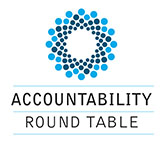SECTION 3. WHAT SHOULD WE DO?
4. CULTURE
Some see institutional nature, problems and solutions in terms of culture. It can be useful to recognise and compare different kinds of culture (ethics, compliance, risk, professional, service, sales, innovation and toxic cultures) and the mix of such cultures in institutions. All should certainly strive for an ethical or standards-based culture [i] and avoid a ‘sales’ culture and refuse to tolerate toxic cultures. However, ‘culture’ is a particularly ambiguous term. Raymond Williams sees it as one of the two or three most complicated terms in the English language. Hayne referred to it as “wrestling with a column of smoke”. Culture can appear to be a ‘black box’ that sits between attempts to reform an institution and improvements in institutional outcomes. If the attempted reforms do not produce the desired outcomes, ‘culture’ or lack thereof, can be an excuse for not achieving them. Culture can become an amorphous ‘catch-all’ concept that includes all that is resistant to change, a prediction that change will take a long time, and an explanation of a failure to change after that ‘long time’ has expired. For example, if employees continue to defy a particular rule, despite codified prohibitions, substantial penalties and tone from top executives and immediate supervisors, then it can be tempting to blame ‘culture’ as the ‘something else’ causing the misconduct. Something in the black box has gone wrong and the imagined black box makes it appear harder to see the breakdown that has caused it to go wrong. In such cases putting a box around various elements of an organisation and calling them ‘culture’ may amount to a mere distraction.
It is very hard to change culture directly. A more effective way is to change behaviour. The way to change behaviour is through changes to ethical standard setting, legal regulation, economic incentives, and institutional design. Civics education in schools and ethics education at all levels is also critically important in populating our institutions with staff who understand and value those institutions and want do deploy public power for the purposes it was created. But idealistic young graduates rarely change institutions by themselves. This brings us back to the concrete steps included in this Policy Paper. These concrete steps can be introduced quickly and can be effective. We need look no further than Queensland’s five-year journey from an ethical laughing stock to global exemplar. For those who say that the Commonwealth is not nearly as bad as Queensland was, it should presumably be much quicker – one year, two years, or maybe as long as a 3 year parliamentary term. But why wait? For those who might think ‘Please God, make me good, but not just yet’[ii] electors are entitled to say ‘make yourself good now or resign immediately! If you do not, you deserve the wrath of God if you believe in Him but the wrath of the Electors in any case.’ It is our power you exercise not yours.
[i] ‘Ethical culture’ refers to: all the qualities and elements of the organisational culture that substantially bear on the organisation’s ethical behaviour, risks, and outcomes—including the conduct of organisation members. Ethical culture results “from the interplay among the formal (e.g., training efforts, codes of ethics and declared institutional purpose) and informal (e.g., peer behaviour, norms concerning ethics and beliefs about them) systems that potentially enhance the ethical behaviour among employees”. See Pablo Ruiz-Palomino and Ricardo Martínez-Cañas, “Ethical Culture, Ethical Intent, and Organizational Citizenship Behavior: The Moderating and Mediating Role of Person-Organization Fit,” Journal of Business Ethics 120 (2014): 96
[ii] The modern version of St Augustine’s request to defer chastity.
